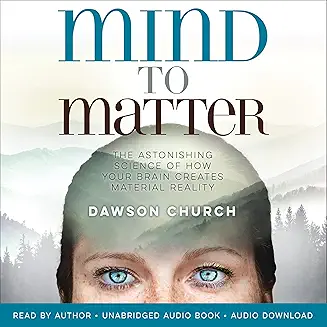What if reality isn’t something we perceive—but something we construct? And what if the human brain, rather than being the world’s most powerful calculator, is actually a predictive, symbolic, and social machine—built not for truth, but for survival?
Welcome to the story of how Homo sapiens evolved the mind: not just to see the world, but to imagine it, shape it, and overcome it.
There is nothing in biology quite like the human brain. Over the past seven million years, our ancestors didn’t just grow larger skulls—they rewired the very interface between perception and existence.
A proto-mind emerged slowly from expanding cortices and deepening grooves. It became a survival system capable of language, imagination, cooperation, and foresight.
This evolutionary tale invites a provocative hypothesis:
That the prolonged postnatal development and neuroplasticity of the human brain, shaped by environmental volatility, social complexity, tool-making, and cultural inheritance, gave rise to a predictive, symbolic mind. A mind so powerful, it began outsourcing knowledge into external systems—allowing collective intelligence to flourish, even at the cost of individual brain mass.
In essence, the human brain stopped being bigger—it became smarter by becoming a networked tool.
Brain volume quadrupled from early hominins to Homo sapiens. Australopithecus had about 400 ml of brain space—just enough for instinct. Homo habilis expanded to 600 ml, introducing rudimentary tools. Homo erectus nearly doubled that, inventing fire and traversing continents.
Then something curious happened: around 30,000 years ago, brain volume shrunk by roughly 10%. A paradox? Not quite.
Dr. Michael Muthukrishna’s Cultural Brain Hypothesis proposes a shift from individual memory to distributed cognition. The rise of storytelling, rituals, and written records meant less reliance on each brain to store information.
Like smartphones tapping into cloud servers, humans began storing collective knowledge outside their heads—freeing up biological energy and accelerating cultural evolution.
Our intelligence wasn’t diminished. It became shared.
Evolution didn’t stop at size. It sculpted texture and complexity. The prefrontal cortex exploded, becoming the epicenter for abstract reasoning, planning, and empathy.
Meanwhile, anatomical specializations emerged across regions once considered secondary:
- Amygdala refined emotional regulation and social awareness.
- Striatum enhanced learning through rewards and habits.
- Thalamus and Pulvinar developed new nuclei for sensory integration.
- Cerebellum, once thought motor-only, joined the cognitive orchestra.
Together, these changes created a mind less focused on immediate survival and more equipped for storytelling, strategy, and social navigation.
Between 800,000–200,000 years ago, wild climatic swings challenged hominin survival. Dr. Robin Dunbar’s Social Brain Hypothesis contends that escalating group sizes—needed for protection and coordination—drove brain expansion.
Fire, shelter, conversation, and shared childcare weren’t just comforts. They were evolutionary pressures that demanded cooperation and cognition.
Those who could navigate social ties and unpredictable environments thrived.
Every artifact tells a story of mental growth:
- Oldowan flakes—basic planning.
- Acheulean handaxes—mental visualization.
- Levallois blades—sequenced steps and foresight.
This tool evolution mirrored cerebral changes. As hands became more dexterous, so did minds. Technology became both cause and consequence of cognitive expansion.
The development of weapons even altered male anatomy. Large canines became obsolete—replaced by stone-tipped spears and social strategy.
Brain tissue is energy-intensive. The shift to meat-eating and food processing allowed humans to reallocate energy from digestion to cognition.
Studies reveal that high-fiber, leafy diets limit brain size—while frugivory supports it. Evolution optimized the energy trade-off.
Simply put: less chewing, more thinking.
Before language, brains were like isolated devices running incompatible software. Then came the universal protocol: syntax, symbols, and semantics.
Language allowed:
- Precise knowledge transmission.
- Emotional regulation and empathy.
- Abstract thought (e.g. justice, infinity).
- Internal dialogue (Vygotsky’s “inner speech”).
Dr. Karl Friston’s Predictive Processing theory sees the brain as a prediction machine. Language amplified this, offering symbolic codes for modeling and anticipating reality.
We don’t just speak to each other—we speak to ourselves, crafting possibilities.
Unlike most animals reacting to the present, humans simulate possible futures:
- Episodic memory = “What happened before?”
- Working memory = “What do I need now?”
- Foresight = “What’s coming next?”
This simulation helped us escape predators, coordinate hunts, and build shelters before storms.
The brain became a GPS—not for directions, but for destiny.
A prolonged juvenile phase made humans the most teachable species. Neural circuits became pluripotent—capable of adapting to new tasks.
Plasticity enabled:
- Learning of non-evolutionary tasks (e.g. math, coding).
- Reusing old circuits for new ideas.
- Cross-network combinations of skills.
Our brain became a Swiss army knife—reshaping its tools based on need.
To survive in complex social groups, we evolved the ability to infer emotions and intentions.
From “home specialists” to hunters, humans needed to coordinate, predict, and empathize. ToM helped us avoid cheaters, forge alliances, and raise children cooperatively.
Empathy wasn’t just a moral triumph—it was an adaptive strategy. It helped avoid conflict, increase bonding, and sustain large coalitions.
Ocher markings, beads, and burial rituals aren’t decorations. They are symbolic mirrors reflecting selfhood, belief, and identity.
Symbols allowed:
- Long-term planning (e.g. calendars).
- Cultural transmission (e.g. myth, law).
- Conflict resolution and hope (e.g. religion).
- Identity formation and social cohesion.
The downside? Abstract anxiety, ideological warfare, and existential dread.
The mind gave us gods. And sometimes, demons.
According to Friston, your brain constantly compares incoming data against predicted models. When the world matches expectation, it uses less energy. When it surprises, your brain rewrites the model.
This process is so efficient, it creates a personalized hallucination we call consciousness.
Many animals show mirror recognition—chimps, dolphins, elephants. But humans take this further:
- Reflecting on the past.
- Imagining future selves.
- Building moral frameworks.
Our frontal cortex allows inward attention—an internal world rich with nuance and self-modeling.
Once humans developed language and tools, they began offloading cognition:
- Memory → writing
- Emotion → rituals
- Navigation → maps
- Planning → institutions
Cultural transmission became an inheritance system more powerful than DNA. Muthukrishna’s hypothesis shows how:
- Learning from elders = fewer trial-and-error deaths.
- Larger groups = more knowledge diversity.
- Teaching = higher fidelity and cumulative innovation.
The brain shrank not from failure, but from efficiency.
We became plug-ins of a collective mind.
The human mind is not a mirror—it’s an engine. One designed to reconstruct reality, predict threats, foster cooperation, and imagine futures.
From predictive hallucinations to symbolic abstractions, our brain became a creator—not a passive receiver. Consciousness was never just a side effect. It was the mechanism by which we simulated survival.
Through distributed cognition, cultural transmission, and symbolic language, the species shed its reliance on isolated intelligence.
And now, in the age of AI, cloud memory, and virtual worlds—we’re not just living in reality.
We are building it.
More on this at Academia.edu paper.
Related Reading
![]()


